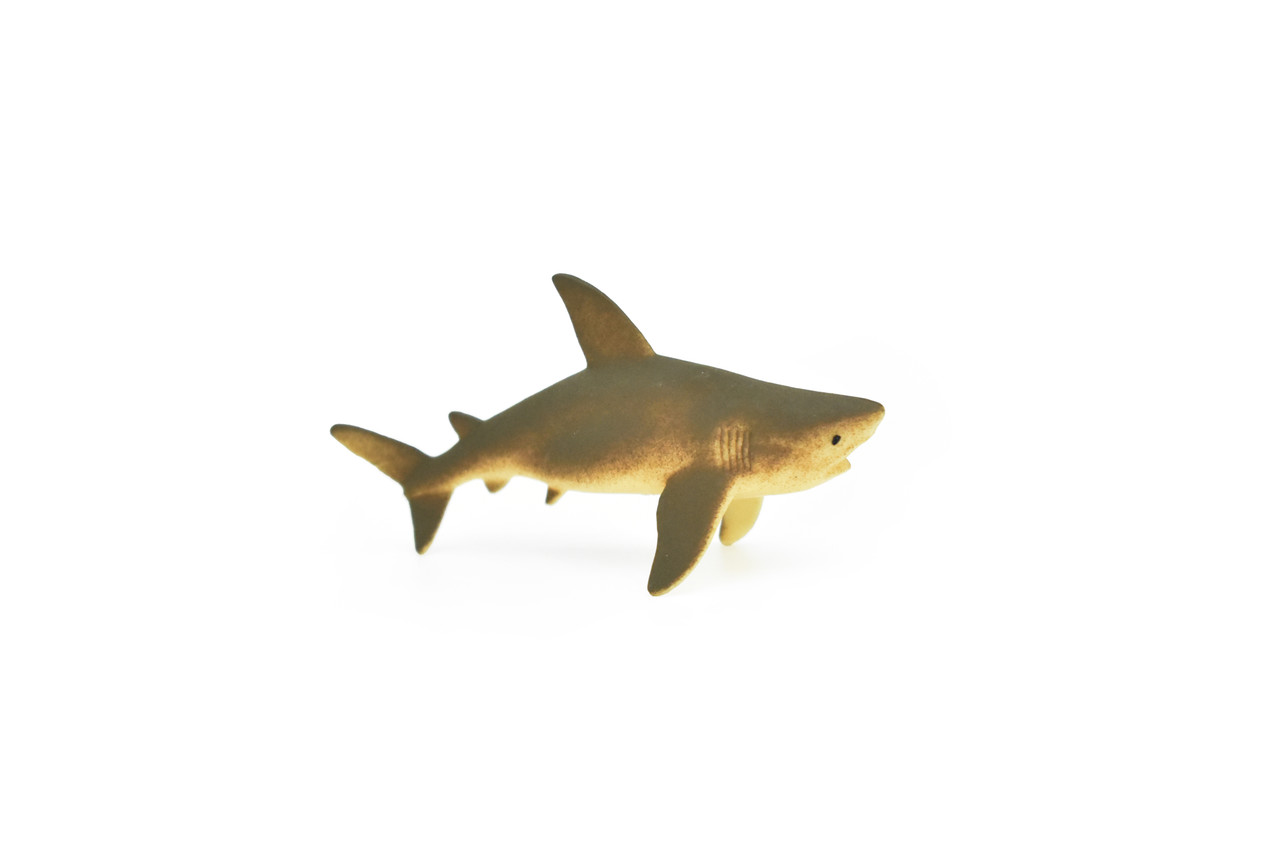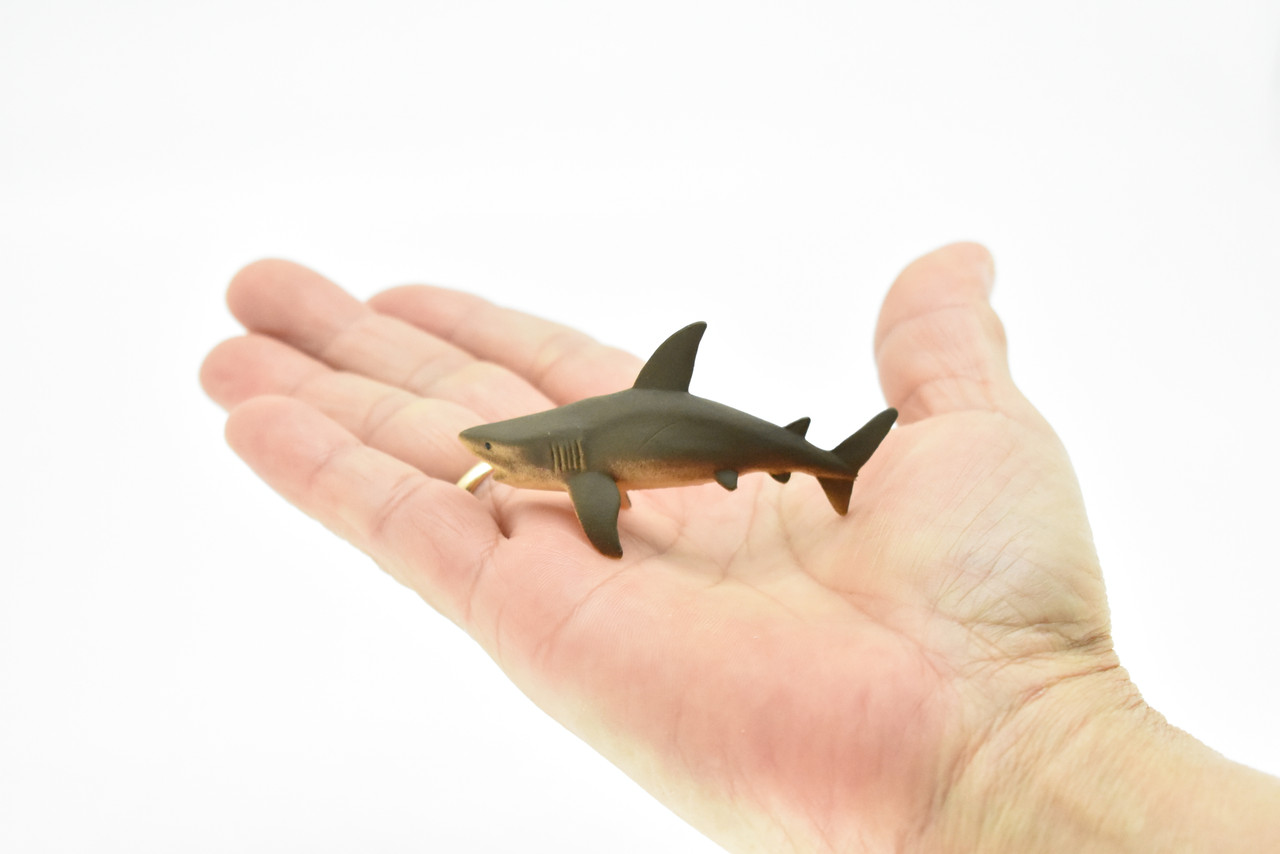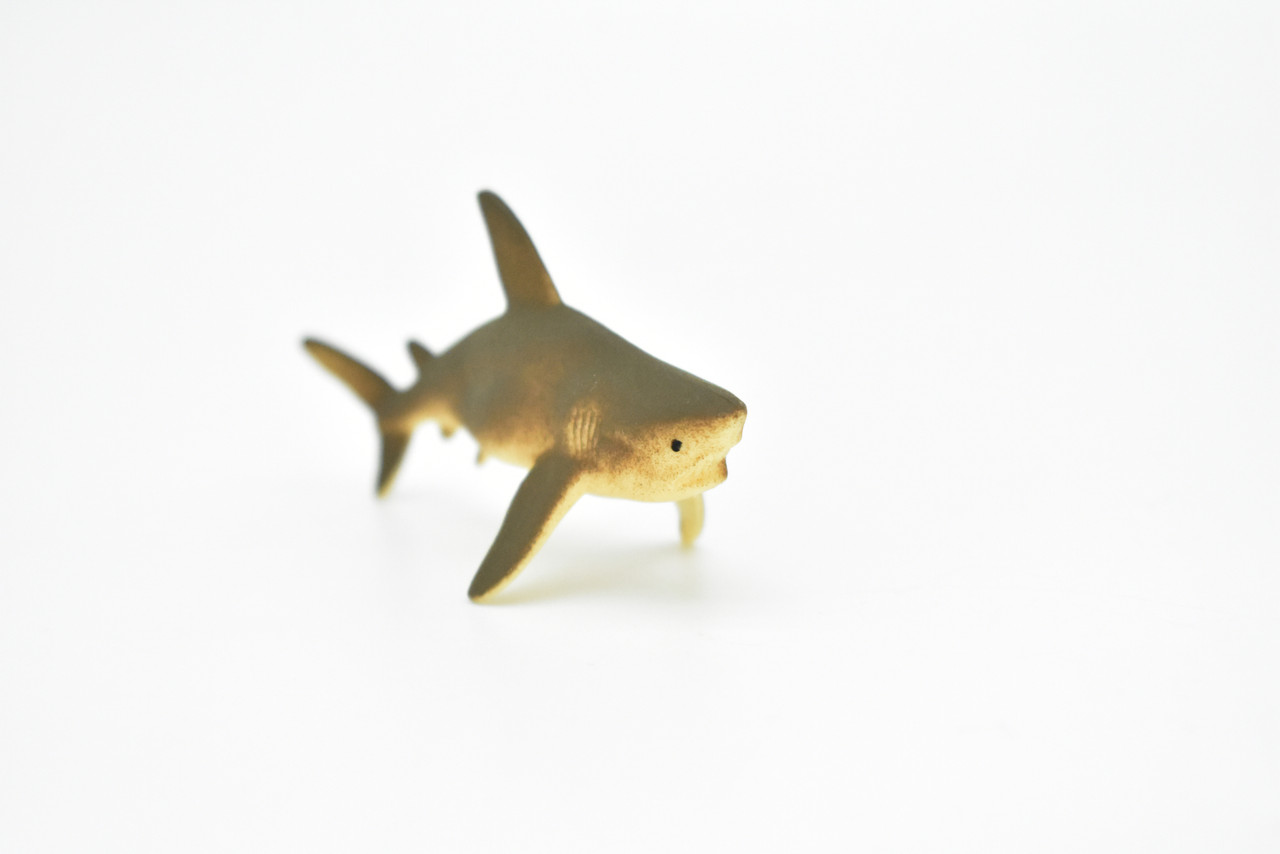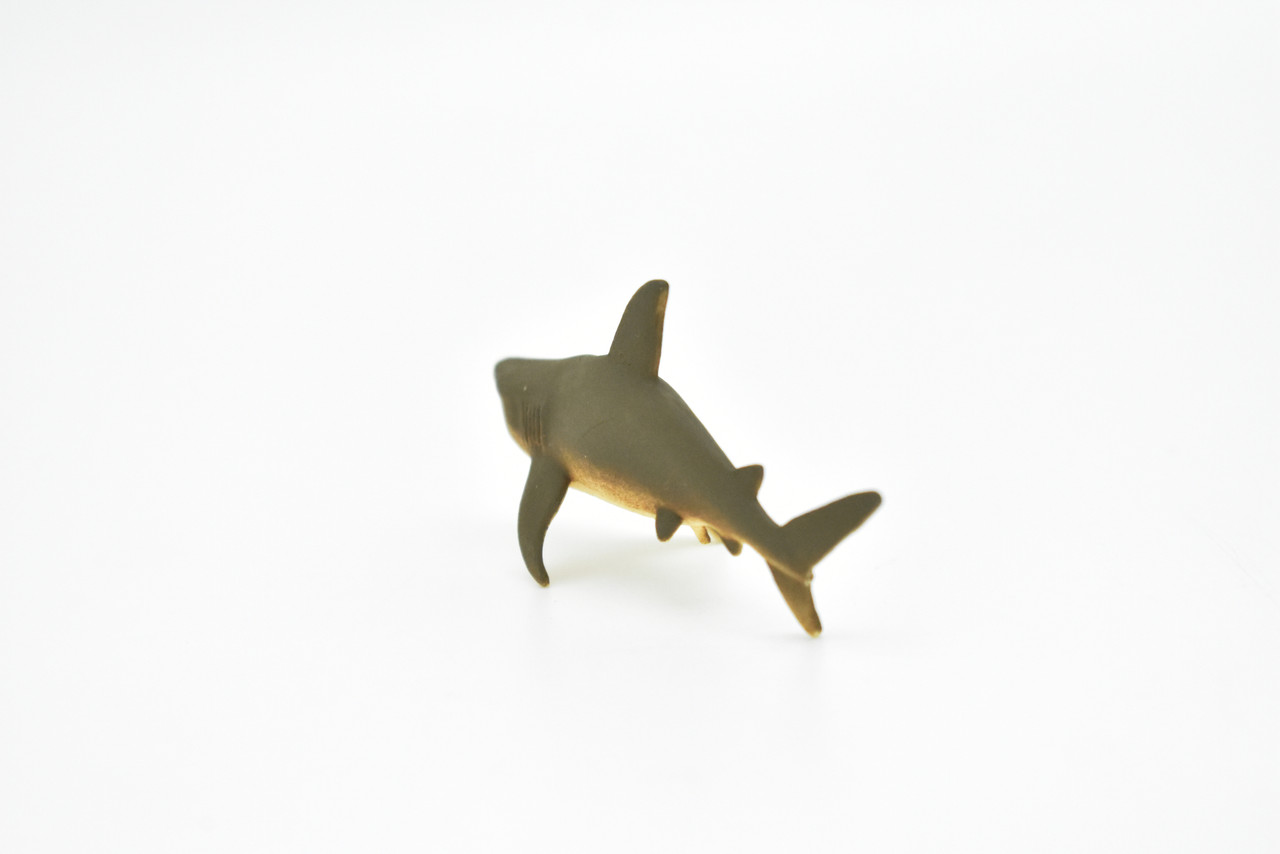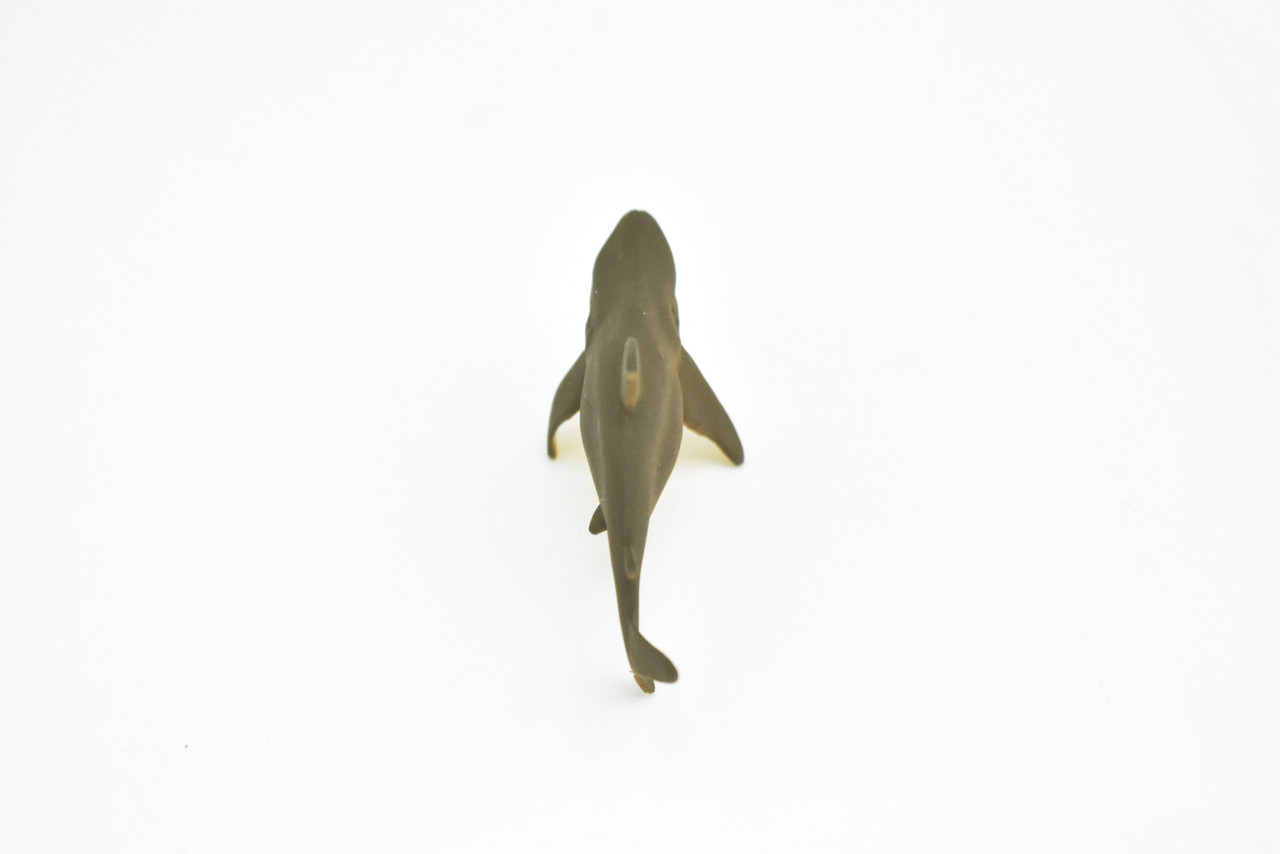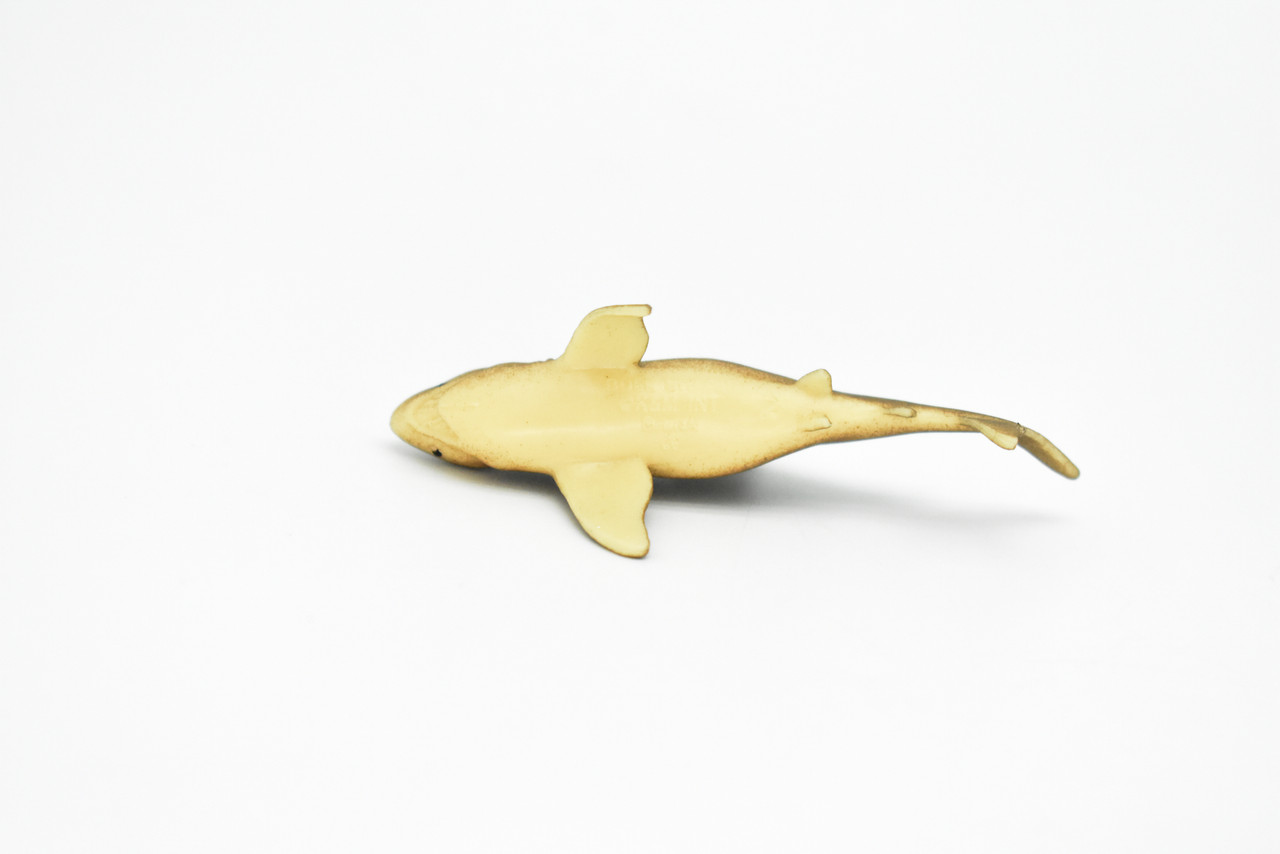Product Description
Our Plastic Bull Shark This small bull shark is made of solid plastic. Its name is imprinted on the bottom. Please peruse our entire shark selection!
Bull Shark Facts Bull sharks (Carcharhinus leucas) are the sharks voted by experts as most likely to attack humans. An aggressive species, bull sharks like to dwell in the same tropical waters where people like to swim and will eat almost anything. While they don't specifically seek out humans, bull sharks may attack out of curiosity. Bull sharks have many aliases which change depending upon their locale: Zambezi shark, Nicaragua Shark, Ganges Shark, shovelnose, ground shark, freshwater whaler, and slipway grey. But perhaps they should be called "under the radar" shark because while people are worrying about being bitten in half by great whites or tiger sharks, the bulls just might be the ones most likely to munch on human flesh. Because, like humans, bull sharks prefer shallow, warm water. Since they live all over the world, bull sharks are likely to be found at your favorite tropical vacation destination. If you think heading over to a local river might be safer, think again. Bull sharks are one of only two shark species which can survive in fresh water (the other is the rare river shark). Bull sharks can travel up rivers and have been found as far inland as Illinois. They prefer freshwater for raising their young as the odds of survival tend to be greater in rivers and lakes. Bull shark populations can be found in several major rivers, in lakes, and in the coastal areas of warm oceans worldwide. Occasionally they can also be found in deep streams. Bull sharks eat just about anything, including each other. Their main diet consists of bony fish and sharks. They aren't afraid of taking on prey larger than themselves. Since bulls can grow between 7.4 and 11 feet long, that's some pretty big prey. In rivers in Mozambique bull sharks have been known to attack hippos. While humans aren't on the menu per se, bull sharks can't see very well, and using their "bump and bite" technique, they may mistake a human for something more traditionally tasty. Since they like to hunt in murky water and can hit a top speed of 11 mph, it's unlikely you'd see them coming until it was too late. Bull sharks are pretty good at letting their shark cousins take the blame for their misdeeds. Many shark attacks which have been attributed to other species like the great white may actually have been perpetrated by bull sharks, including the 1916 Jersey Shore attacks which inspired the novel Jaws by Peter Benchley.

